The Chukar, also known as the “Chukar partridge,” is a small bird that lives across Eurasia. You can easily distinguish them by their red beaks and black masks. They are members of the Phasianidae family, along with pheasants, turkeys, quail, chickens, and peacocks.
Like many members of that family, this species is primarily terrestrial, and usually lives on the ground. Read on to learn about the Chukar.
Description of the Chukar
As far as partridges go, Chukars are relatively large, though they are not overwhelmingly large birds. They are a little larger than a foot long, and weigh up to a pound and a half.
Their plumage, or feathers, is light tan, and they have black stripes along a patch on either side of their bodies. They also have a c-shaped band of black feathers, running from just above their beaks, over their eyes, and around their chins to the top of their breasts.
Interesting Facts About the Chukar
These are common birds, and humans have even introduced them to areas outside of their native range. They are interesting little birds, and you can learn more about them below.
- Dust Bath – Instead of bathing in water, Chukars use loose dust and sand to clean their feathers. They dig a small dip in the ground, lie in it, and use their wings to throw sand up over their backs. From there, they shuffle comically around to distribute the dust throughout their feathers. Once they are finished, they give a hefty shake to remove the dirt.
- Precocial vs. Altricial – Generally speaking, when birds hatch, their chicks are either precocial or altricial. Precocial chicks are fuzzy and cute, while altricial chicks are naked and, well … ugly. Precocial hatchlings, like Chukars, ducklings, goslings, and the chicks of chickens, turkeys, and more, walk and follow their mothers almost immediately after they hatch. Altricial hatchlings are helpless, and their mothers must feed and care for them while they develop.
- What’s in a Name – Like so many birds before it, humans named the Chukar for its vocalizations. These birds call to one another using soft “chucks” and louder “chukars.” Some other birds named for their calls are bobwhite quail, whippoorwill, and killdeer.
- Beneficial Introduction – This species of partridge is one of the few examples where humans introduced an animal to an ecosystem that it did not previously live, and the results benefitted the ecosystem. Most introduced species are detrimental and harm or compete with native wildlife. Chukars replaced another species of bird that went extinct in Hawaii, and helps spread the seeds of the native plants in the area.
Habitat of the Chukar
This species lives in surprisingly rugged and hostile habitats. They prefer mountainous regions, with rocky outcrops as well as deserts and desert edges.
Most of the regions that they inhabit are arid with little rainfall, or semi-arid with slightly more rain. Chukars live primarily in open regions with grasses and small shrubs for them to feed on and hide in.
Distribution of the Chukar
In their native range, this species lives from the Middle East, through Asia to eastern China. Humans have also introduced this species to several areas outside of its native range.
A large feral population lives in the United States, primarily in the Midwest. We also introduced these birds to Canada, South America, Hawaii, New Zealand, and even South Africa.
Diet of the Chukar
This species is primarily herbivorous, though younger birds feed on insects while growing. They eat a variety of grasses, flowering plants, shrubs, seeds, berries, fruits, and more. Some do eat grains and agricultural products, but they usually do not live close to farmland. Young birds eat locusts, beetles, flies, spiders, and other invertebrates.
Chukar and Human Interaction
Chukars, like many partridges, quails, and pheasants, are game birds. Humans commonly hunt them for sport, and eat their meat. There exist tight regulations on hunting in order to keep populations healthy.
Most populations, including both native and non-native, are healthy and even increasing in number. Of course, in some regions habitat destruction causes populations to decrease. The IUCN lists this species as Least Concern.
Interestingly, this bird is the national bird of Pakistan and Iraq.
Domestication
Humans have not fully domesticated this species, like they have with some other members of the Phasianidae family.
Does the Chukar Make a Good Pet
No, Chukars do not make good pets. They are wild birds, and naturally live in rocky and inhospitable regions. They also carry disease that they can inadvertently spread to humans and other birds. Because of this, they make poor pets. However, captive bred Chukars, from responsible breeders, can make good livestock in the right conditions.
Chukar Care
In human care, this species has somewhat more stringent requirements than some other poultry. They do not mix well with other species, and do not mix well with one another unless they have lots of space to roam. Chukars cannot eat regular poultry food, and you must purchase game bird feed to meet their dietary needs.
Behavior of the Chukar
This species is terrestrial, and spends most of its time on the ground. They are most active during the day, and hide in shrubbery or rocky outcrops at night.
These birds are quite social, and groups, called “coveys,” congregate in various numbers. They call to one another using a variety of vocalizations, including “chucks” and “chukars.”
Reproduction of the Chukar
Each breeding season, pairs of Chukars form to reproduce and raise chicks. They build their nests on the ground, and females lay approximately 10 eggs per clutch. Females usually incubate the eggs for around 3 weeks, and the young chicks follow their mother soon after hatching.
The mother shows her chicks how to find food, and protects them from predators. Once the chicks are about 12 weeks old, they are fully independent.





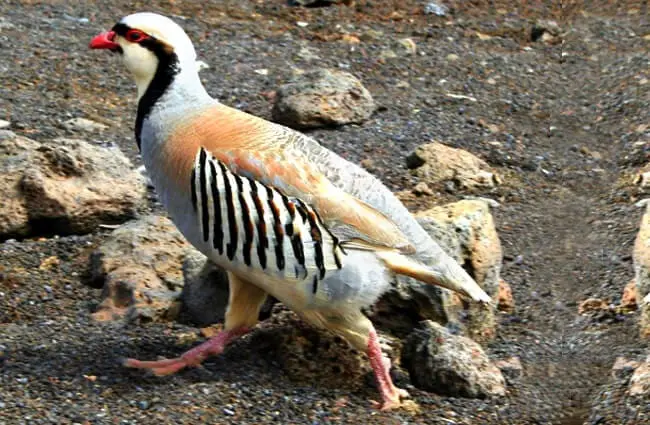

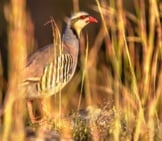
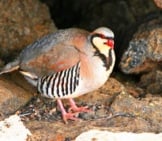
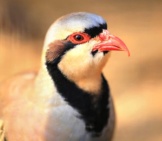
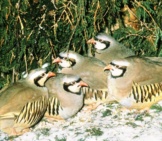
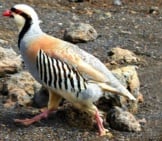
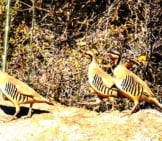
![Red Angus Closeup of a beautiful Red Angus cowPhoto by: U.S. Department of Agriculture [pubic domain]https://creativecommons.org/licenses/by/2.0/](https://animals.net/wp-content/uploads/2020/03/Red-Angus-4-238x178.jpg)












![Red Angus Closeup of a beautiful Red Angus cowPhoto by: U.S. Department of Agriculture [pubic domain]https://creativecommons.org/licenses/by/2.0/](https://animals.net/wp-content/uploads/2020/03/Red-Angus-4-100x75.jpg)

